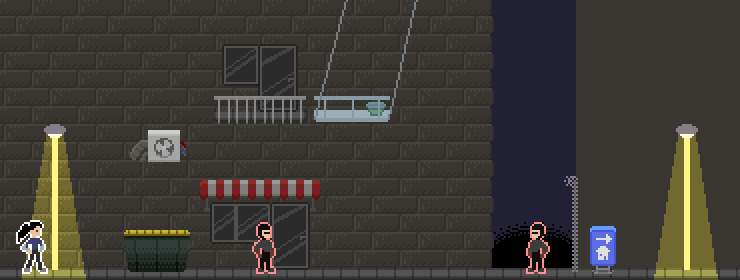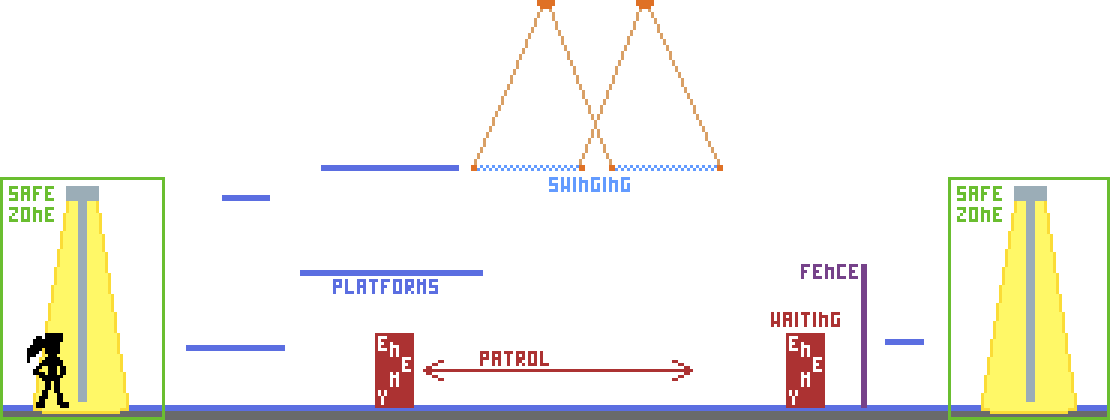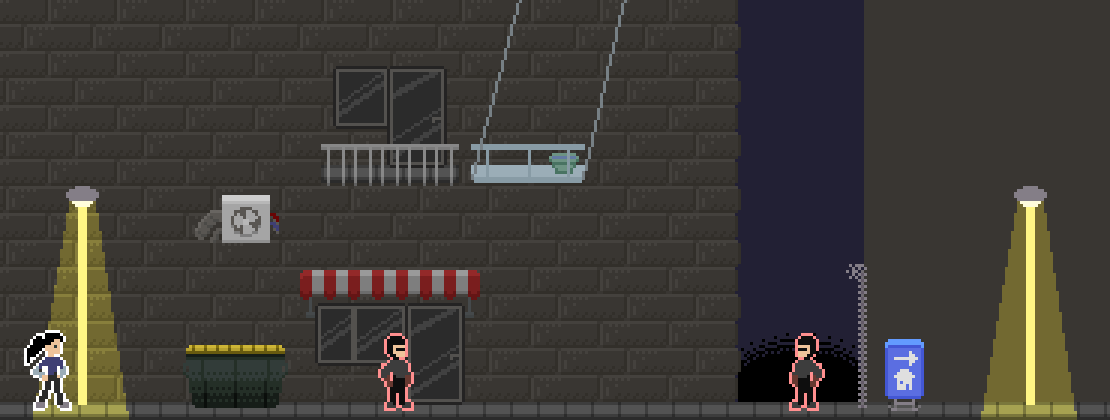My game revolves around a girl who is late from work and now has to deal with stalkers. So obviously I cant have floating platforms because that would not look natural. How do i make the hazards?
Hi,
Have you already watched all videos in the Tile Vania section? Rick adds hazards to his game.
Thats not what i meant. It was more of a design question actually. Like if I cant have floating platforms, which is basically what 90% of a platformer game is, how do i design the challenges
Do you play platformers yourself? If so, what do you find challenging? Make a list of challenges and try to implement something similar in your own game.
If you don’t know any platformers without floating platforms, you could play other student’s Tile Vania games to see if you encounter any challenges. Try to figure out what makes the moment challenging and try to apply your new knowledge on your own game.
Last but not least, please feel free to ask our helpful community of students for advice over on our Discord chat server.
I hope this helped. 
See also:
- Forum User Guides : How to mark a topic as solved
It would be good to know what mechanics your game has to help answer your question, what the player movement is like for example. Is it very tame or exaggerated? Do you want to stick to mostly horizontal gameplay or is it fine to go more vertical? Can you wall-jump or grab ledges?
Personally, I think the theme of your game doesn’t really mesh well with platformer gameplay BUT that doesn’t mean there are no ways to make it work.
Here is what I came up with:
I think you could go for a “stay in the light” game-play and have stalkers in the shadow areas. If you’re in a shadow the stalkers would chase after you or in some cases outright grab you (trap mechanic) so you’d have to get through fast, then you could “rest” in the light.
As for platforming objects, you should just use the environment. For example, if your setting is in the city you could jump on top of dumpsters, benches, canopies, porches, scaffolding, balconies, signs etc. BUT while designing your level you should still think about platforming elements first, then design the environment around them. It’s important to get the “feel” of the level right first before committing with art and looks.
For example you would mock up a level like so:
Then play test it, make adjustments etc. and if you’re happy with it you could then finalize it by building the scene. Please excuse the rushed job but it could look something like this:
Obviously, you’d take more time and care to make your game look good but this is just an example.
Here is how the level would play out:

I hope that helps!
Thank you thats really helpful. I really like the ideas of using balconies and benches (cars also) as platforms. Also my character uses an umbrella since its raining so i was thinking of gliding with the umbrella and launching yourself a small distance when opening the umbrella as a few abilities.
I really like that art btw.
Also do you think I should have “rooms” as in like metroidvanias or just one continuous level?
Those are good ideas, the umbrella opens up a lot of possibilities.
Gliding with an open one and accelerated fall if pointed down.
Use an open one against vents to gain lift or speed.
Hold it “inverse” and use the handle as a sort of hook for swinging across gaps or zipping down on ropes and wires.
Traverse water or slide on puddles to gain momentum.
Not sure if you’re planning to use it as a weapon but it could also be used to temporarily stun certain enemies or used as a shield.
Could also be used as a balancing rod for crossing ropes, wires or walking on ledges giving the player an extra challenge (kinda like Tony Hawk games balance meter).
Extra reach for triggering switches/levers or to push/pull items around if that’s something you want to implement, though that’s more of a puzzle-solving mechanic.
As for rooms vs continuous, I think it partly depends on the scope of the game, if you’re planning to make a long game then rooms are almost inevitable one way or another, even if they’re big you’ll have to compartmentalize your game to make it manageable.
When it comes to small rooms vs longer levels I would say it’s kinda completely up to you.
Smaller rooms have the benefit of being individual challenges and you can introduce one mechanic after another using them. I would say they are more manageable for the player but limit you space-wise and may not allow for some game mechanics to flourish.
Big continuous levels tend to give more freedom to both you and the player, I would say they are more challenging both to make well and to solve as a player. There is more opportunity for backtracking too so a level may have to be designed to be solved both forward and backward. It does make opportunities for longer chains of obstacles and some very satisfying moments when you “combo” through just right.
I think one more thing to think about would be if you want to be lenient or rigid in your level structure. Leaniant means the stage may be completed in multiple ways and player is more free to choose a path, easier or harder. Rigid would mean there is only one solution and the player has to figure it out and execute it to finish the stage.
Well im just a beginner so i cant possibly manage to do all this but this is the first section where I can also use my artistic skills to full extent so im really excited about spending lots of time on it. I’m not really planning to have combat but I maybe can use the umbrella to parry (unless it makes things too easy).
I think my game will be quite small so i’ll just go with continuous levels.
Since im a metroidvania fan ill try to go with lenient level design but not sure if i have the skills to do it right now.
Sounds great, start small and build your way up.
You don’t need to implement what you don’t like and you don’t need to implement every mechanic from the get-go, you can always add more later.
Good luck!
This topic was automatically closed 24 hours after the last reply. New replies are no longer allowed.



